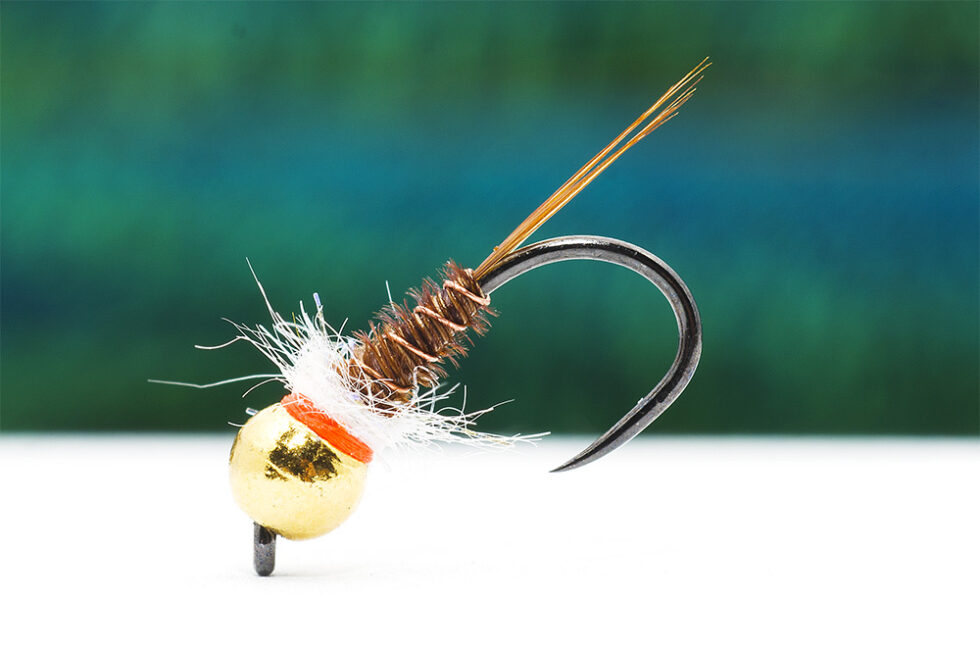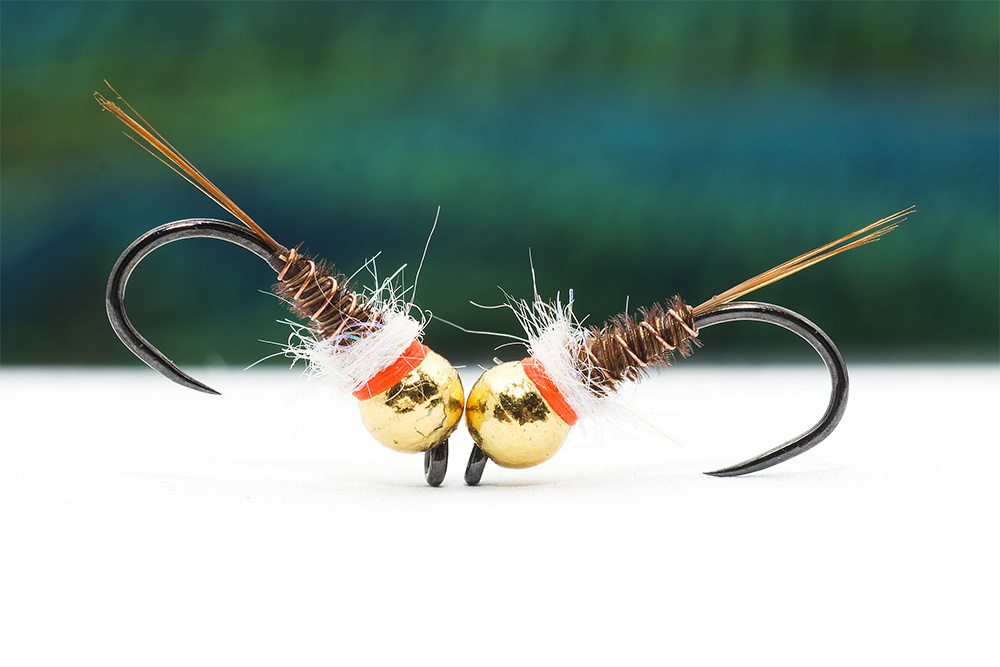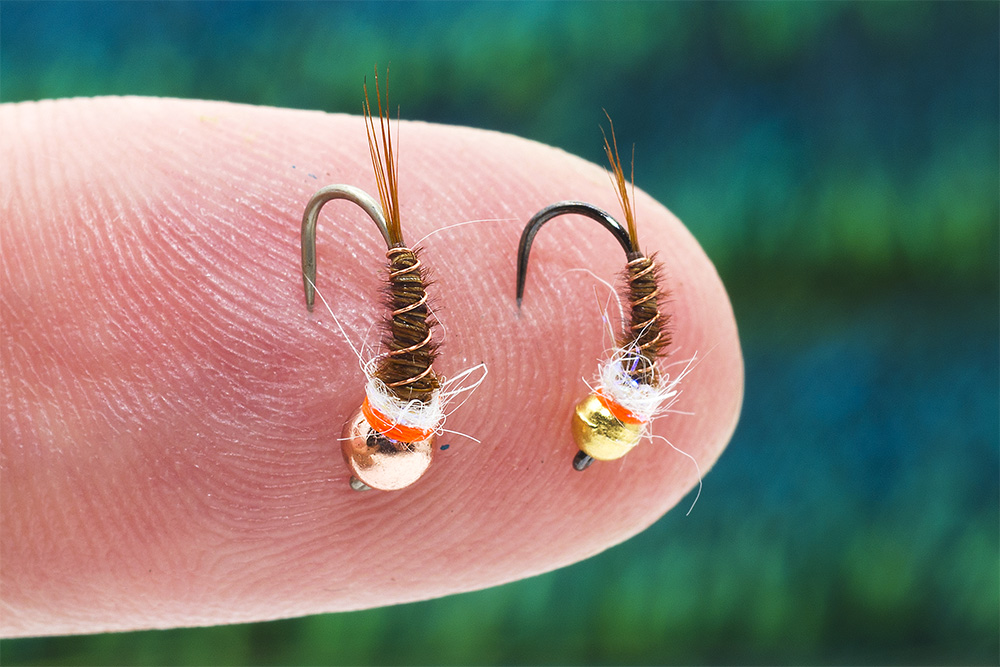
Today, I want to introduce you to a very special nymph that I recently tied, part of the renowned Edy Dona’s series of flies. This particular pattern is based on the classic pheasant tail nymph and is one of the iconic designs that have played a significant role in Edy Dona’s numerous championship victories, including titles such as World Champion, National Italian Champion, and European Champion.
Edy Dona is a remarkable fisherman, known for his pride, competitive spirit, and quintessentially Italian passion for the sport. He not only excels in competitions but also runs a charming fishing shop and serves as an exceptional guide. His deep knowledge and experience have allowed him to develop flies that are highly effective and widely respected in the fly fishing community.
This nymph stands out because of its distinctive white dubbing thorax, which adds a unique touch to an otherwise classic pattern. When you first see it in the fly box, you might have some doubts about its effectiveness, but those doubts will quickly vanish once you see it in action on the water. This fly is a reliable performer, consistently catching fish in a variety of conditions and locations.

One of the key reasons for its success is the contrast provided by the colors of the body and thorax. The combination of white, brown, and a hint of orange creates a striking visual effect that attracts fish and triggers their feeding instincts. This contrast is particularly effective in various water conditions, making the nymph a versatile choice for anglers.
I have a deep appreciation for Edy Dona’s work, and this nymph is a perfect example of his craftsmanship and understanding of what makes a fly truly effective. Whether you’re fishing in fast-flowing rivers or calm and deep pools, this nymph will prove to be a valuable addition to your fly box. Its unique design and proven track record make it a must-have for any serious fly fisherman.
By the way, Edy Donà runs a wonderful fishing shop https://www.flytiersworld.com in northern Italy that is worth a visit if you’re in the area. If you have the chance to spend some time with him, I highly recommend booking a day or two of fishing with him. Edy offers guiding services that provide not only valuable lessons in fly fishing but also a delightful experience of Italian hospitality and culture.
In summary, this nymph is more than just a fly; it’s a piece of angling history and a testament to Edy Dona’s legacy in the world of fly fishing. If you haven’t tried one of Dona’s flies yet, I highly recommend giving this nymph a place in your arsenal. It’s a pattern that will not only enhance your fishing experience but also connect you to the rich tradition of one of the sport’s greatest champions.

Materials:
- Hook: Maruto D04 HWW #14-16
- Thread: Brown – I use Sumo Power Thread in 50DEN
- Body: Brown-reddish pheasant tail barbs
- Ribbing: Copper wire
- Tail: Coq de Leon color Rubion ( pardo or indio )
- Thorax: White Belgian Dubbing mixed with White Spectra Dubbing:
- Thread for thorax: -Orange.
Video:

July 3, 2024
You mention Dona’s fishing shop but what is the name and address and contact info. I will be in the Lake Como area in Sept. and would like to stop by.
July 5, 2024
Hi Jeff, you are right, I forgot to add the Edy Donà whebshop address. Here it is: https://www.flytiersworld.com/shop/en/who-we-are, and I updated the article with this detail.
thanks and my best wishes 🙂
Lucian
July 5, 2024
This fly is strikingly similar to Lance Egan’s Frenchie which is also very effective, though I have not tried it with a white thorax. Would you mind sharing your inspiration for this fly?
July 6, 2024
Hi Robert,
Thank you for reading my blog and I hope you like it. The fly shown here is a variation using pheasant feathers, made based on Edy Dona’s original Brown and White Nymph. Currently, I don’t have access to Edy’s specific brown dubbing material, which is why I’ve used this version (which is a version used a lot by Edy himself). Edy has been successfully using this fly for many years , and If I do not make a mistake, long long before than 2000. Nymphs with a pheasant body, a bright hot spot thread, and colored synthetic dubbing have been popular in Italy, Austria, Poland, the Czech Republic, Slovakia, and other Eastern European countries since the 1980-1990. I’ve been using a similar fly myself since before 2000, though I use orange dubbing without the hot spot thread.
In the United States, these flies are typically tied with a pheasant body and a distinctive hot spot thread. They gained prominence thanks to Lance Egan’s “Frenchie” fly, which contributed to the American team’s success at the World Championship in Portugal around 2005 or 2006. Lance has clearly stated that he did not invent this fly, and while the original creator might be unknown, what matters most is its effectiveness on the water.
Thanks!
Lucian
February 14, 2025
Hi Lucian,
you mention in this pattern that you use white spectra dubbing, but which one do you use?
The white violet (SA 97), the white-blue effect (SA 92) or the white-green effect (SA 91)?
Thanks in advance.
Gino Verbinnen
February 15, 2025
Hi Gino,
It depends—in some rivers, the white with green reflexes works better, while in others, the white with blue reflexes is more effective.
For my flies, I personally mix both in equal proportions, then I use white rabbit dubbing (Belgian dubbing from Troutline).
My advice is to test it in your rivers to see which works best, or to tie two series of nymphs with both versions. This way, when you travel, you can test them and adjust accordingly.
Hope this helps! 😊